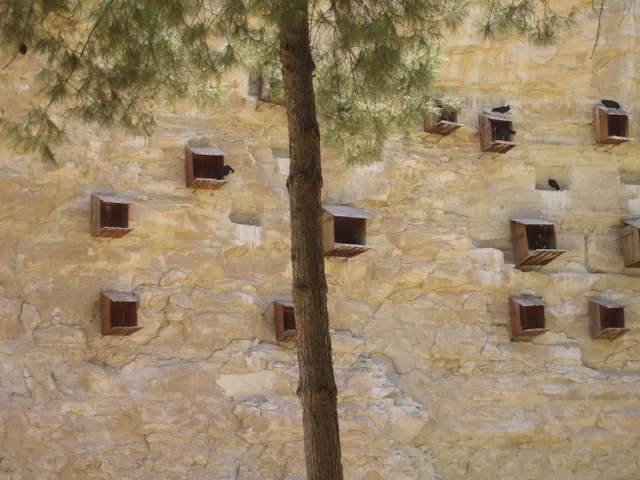The last ibis in Syria
c17a16c6-63c8-4033-a1a1-95759be922d5

A lesser-known victim of the current Syrian crisis is the Critically Endangered Northern Bald Ibis, which is down to its last known individual.
An international team has continued to monitor the dwindling population of Northern Bald Ibis in the Middle East, and reports that only one bird has returned to the traditional nest site at Palmyra, Syria, this spring. There appear to be no more birds left, as four birds seen in January in the Ethiopian highlands, where they winter, have disappeared and none of the radio tags attached to known birds are working any longer.
The relict population was only discovered in 2002 during a brief period when Syria became more open and politically stable, but the colony was already on its last legs and numbered just three pairs. Just one pair was present in 2012, but these did not breed. International co-operation had been slow to arrange but was finally making headway with the formation of a new International Working Group in November 2012, created to try and save the last birds.
Another eastern colony still exists at Birecik, southern Turkey, though this feral colony, too, has seen a steep decline in numbers in recent years. Around 100 breeding pairs remain in two colonies in Morocco, while a small feral colony persists in Cadiz province, Spain.
An international team has continued to monitor the dwindling population of Northern Bald Ibis in the Middle East, and reports that only one bird has returned to the traditional nest site at Palmyra, Syria, this spring. There appear to be no more birds left, as four birds seen in January in the Ethiopian highlands, where they winter, have disappeared and none of the radio tags attached to known birds are working any longer.
The relict population was only discovered in 2002 during a brief period when Syria became more open and politically stable, but the colony was already on its last legs and numbered just three pairs. Just one pair was present in 2012, but these did not breed. International co-operation had been slow to arrange but was finally making headway with the formation of a new International Working Group in November 2012, created to try and save the last birds.
Another eastern colony still exists at Birecik, southern Turkey, though this feral colony, too, has seen a steep decline in numbers in recent years. Around 100 breeding pairs remain in two colonies in Morocco, while a small feral colony persists in Cadiz province, Spain.

